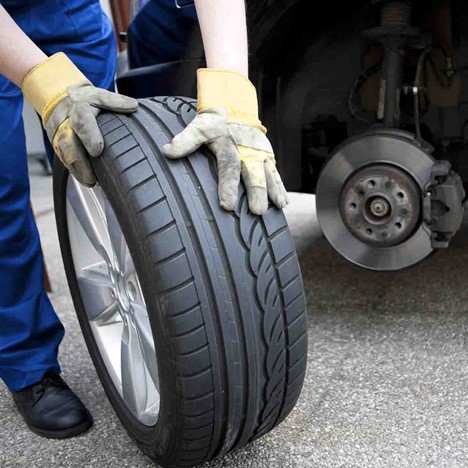6 Things Most People Ignore when Changing Vehicle Tyres and How to Get Replacement Ones
People seem to misunderstand the delicate nature of changing vehicle tyres. To many, changing your tyres should be done in a jiffy. It’s nothing more than jacking your car up, removing the rims, and replacing the flat tyre. Right?
Wrong! You see, changing vehicle tyres could be dangerous if not done correctly. Placing the jack in the wrong place could have the car crashing down at the worst possible time. Not only that! Not wedging other tyres could cause the car to move down the road without warning.

It’s a lot more rational to be safe than to be sorry. So, if you’ve had a bad tyre-changing experience in the past or you just want to know how to change your tyres the right way, we’re here for you. Here are 6 things most people ignore when changing their tyres in Unanderra.
1. Wedging (or shocking) the good tyres to the ground
When changing tyres, it’s normal to lift up your parking brakes to make sure your vehicle doesn’t move while on the ground. However, in most cases, this is not enough. You may not know it but, your vehicle could slide down the road. The best way to prepare for this is to place wedges under the other good tyres on the ground. This action further secures your vehicle to the ground and would come in handy if there’s a brake failure during your tyre change.
2. Positioning the jack in the right spot
Due to inadequate time or just pure ignorance, vehicle owners and drivers sometimes don’t find the right spots to position the jack. Some drivers just find a smooth spot under their vehicles and place the jack there. This is dangerous as your vehicle is more likely to slip off the jack’s top and roll away. If you need to change the front tyre for your car, look for the tiny hole under the door area so you can place your jack under it. If it’s the back that needs changing, then you should look for the same points around the area. Make sure you find it before positioning your jack.
3. Tyre codes
The tyre codes on a particular tyre type are similar to batch numbers on any manufactured product. However, the numbers on a tyre tell a lot more than just the production dates and actual batch numbers. A typical tyre code lets you know the aspect ratio, height, and width of your tyres. If deciphered correctly, you could find out the diameter of your car rim and even the type of tyre! Awesome right?
4. Loosening and tightening the lug nuts while the vehicle is on the ground
The next time you’re changing your tyres, make sure you loosen (when starting) and tighten (when done) your lug nuts before jacking the car up. Otherwise, the tyres would keep rotating while they’re up and this would make loosening the nuts way harder than it’s supposed to be.
5. Having the right tools on-set
You may think a jack, some spanners, a lug wrench, and a spare tyre is all you need to change a bad tyre on a normal day. While these tools are crucial to changing any bad tyre successfully. They would not suffice in some conditions. The reality of tyres in Unanderra has taught us to expect the worst to happen anytime. Imagine having a bad tyre day right on the highway. Obviously, this would require you to pack your car by the road so you can do your repairs. Unfortunately for you, highways don’t have sides as oncoming vehicles use all the space available. This is where the reflective triangle comes in. placing this at the front and back of your vehicle would tell drivers that you’re working on your vehicle at present.
A flashlight should be added to your toolbox just in case you need to change your tyres in the middle of the night. If you feel you need other tools for convenience, feel free to add them to your toolbox.
6. The age of their tyres
Most times, people only attach their spare tyres with the hopes of getting their previous one fixed and reattached. While this is not a bad idea, you might want to consider the lifespan of your tyres. If yours has been around for 8 years, then you may have laid them to rest. Get your vehicle some new rubber so they feel the road once more.
Remembering these six forgotten tyre-changing facts would make each change much smoother than the last. As promised, here’s a list of tips experts advise you follow when the time comes for replacement tyres.
You need to make sure it’s time to get new tyres. Check for any sign of wear and tear or discolourations of any sort before you make preparations for new tyres. Also, check for possible problems with your vehicle itself. Installing replacement tyres on a vehicle with suspension problems wouldn’t help things.
Interpret the side markings of your tyres. A typical example of a sidewall tyre code could be LT213/71R 17 96H M+S. The “LT” means Light Trucks; the digits, 213 indicate the tyre width as measured from one sidewall to the other. 71 tells the ratio of height to width of the tyres. Letter R indicates Radial tyres. The digit 17 indicates the diameter the wheel can be fitted to, 96 indicates the load-bearing capacity of the vehicle. H tells the tyre speed rating and the last letters refer to mud and snow. Proper interpretation of sidewall tyre codes literally helps you get better replacement tyres for your vehicle.
So, the next time you’re shopping for replacement tyres in Unanderra, make sure you decipher your sidewall code correctly before going on your way. Got any more questions or inquiries? Give us a call!
Disclaimer: This is a generic Information & post; content about the services can be changed from time to time as per your requirements and contract. To get the latest and updated information, contact us today or visit our website.


